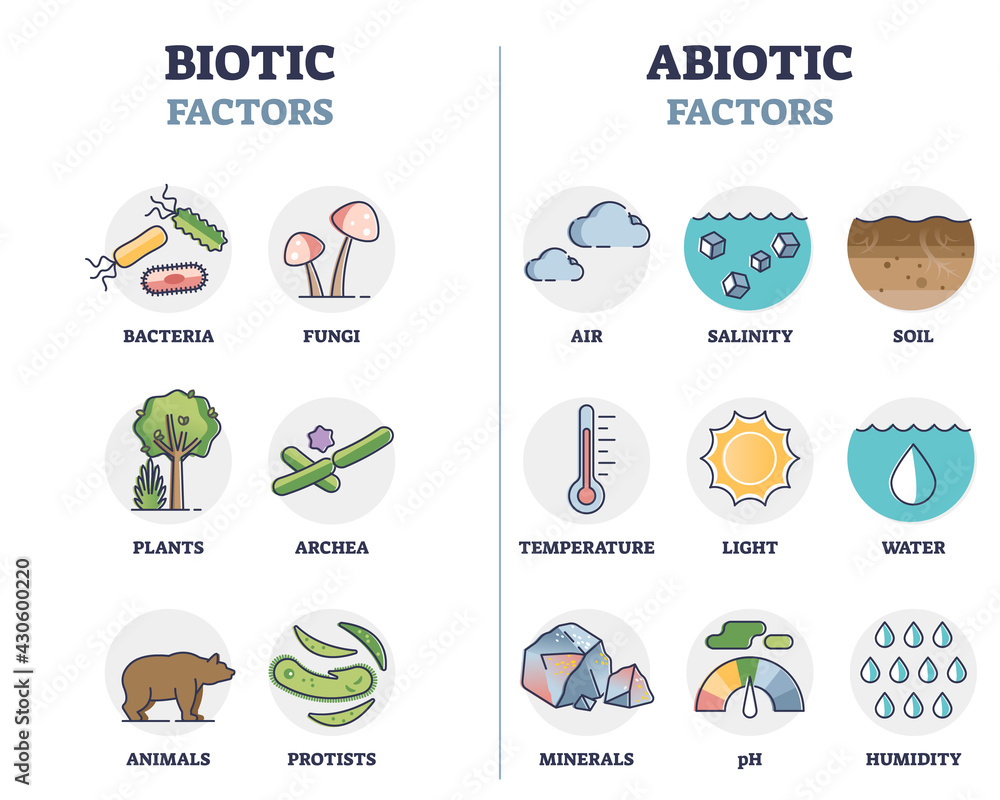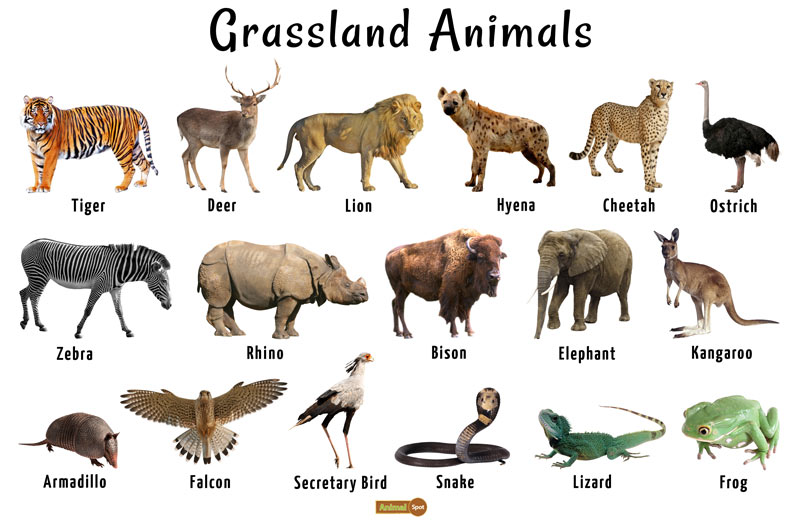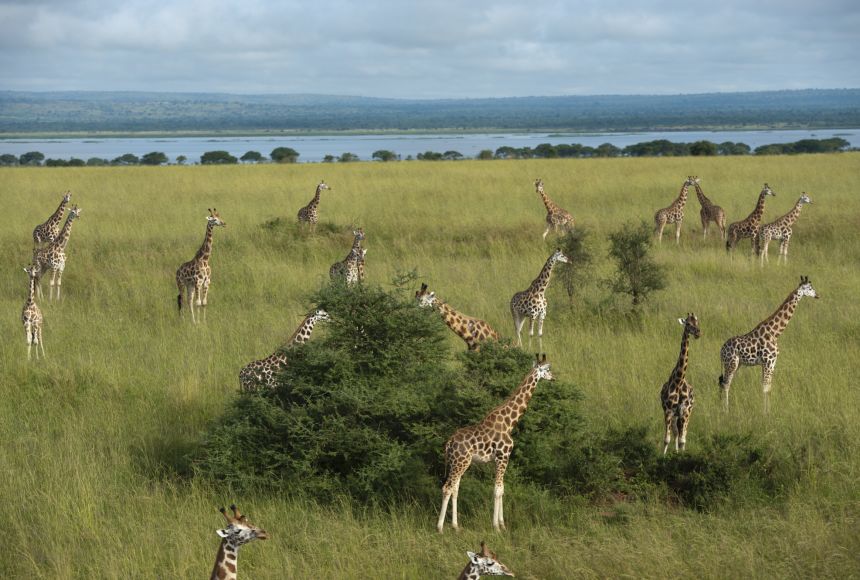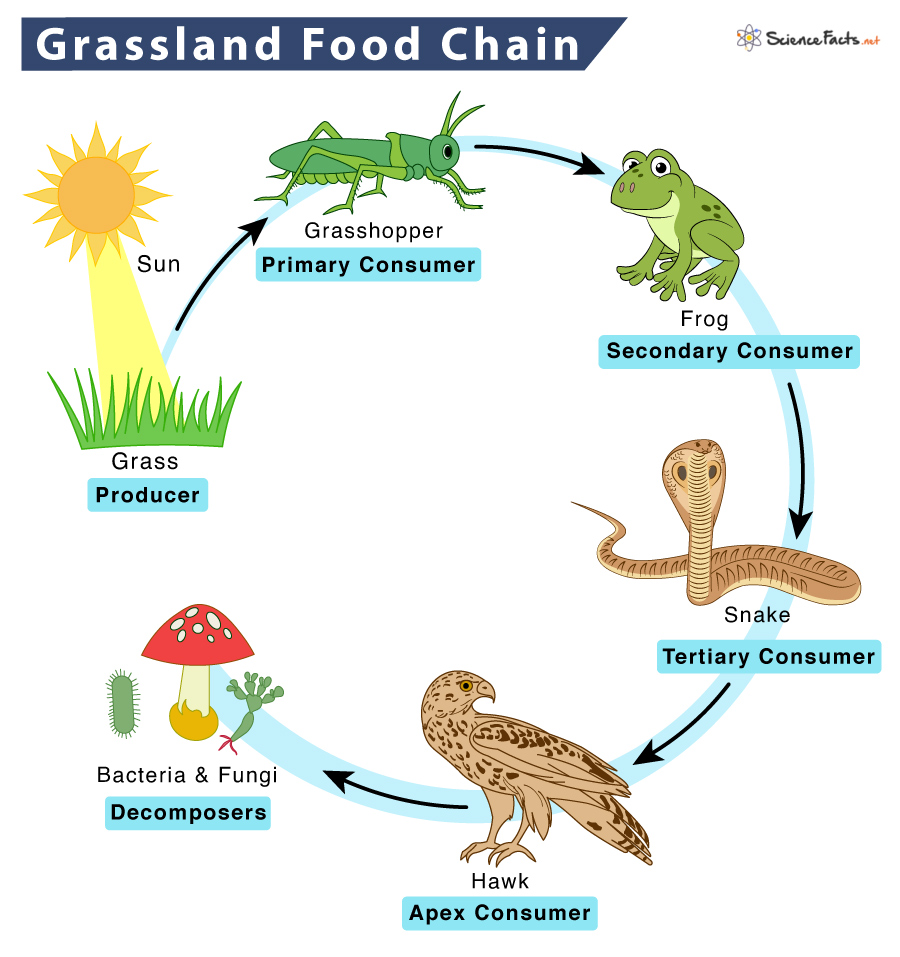Topic abiotic factors in ocean ecosystem: Explore the unseen forces shaping ocean ecosystems: abiotic factors. From sunlight to salinity, these elements play a crucial role in sustaining marine life beneath the waves.
Table of Content
- What are the abiotic factors in an ocean ecosystem?
- Understanding Abiotic Factors in Ocean Ecosystems
- Key Abiotic Factors: Light, Temperature, and Salinity
- Impact of Water Movement and Density
- Nutrients and Their Role in Ocean Ecosystems
- Oxygen Levels and Dissolved Gases
- Pressure and Depth: Influencing Life in the Deep Sea
- YOUTUBE: Abiotic Factors of the Ocean
- pH Levels and Their Ecological Significance
- Salinity Variations Across Different Ocean Regions
- Role of Sediments in Marine Ecosystems
- Climate Change Effects on Oceanic Abiotic Factors
What are the abiotic factors in an ocean ecosystem?
Abiotic factors are non-living components that play a crucial role in shaping the marine ecosystem. In an ocean ecosystem, the abiotic factors include:
- Temperature: The temperature of the ocean varies depending on the location and depth. It plays a significant role in determining the distribution of organisms and regulating their metabolic rates.
- Salinity: Salinity refers to the concentration of dissolved salts in the water. Different areas of the ocean have varying levels of salinity, which affects the osmoregulation and survival of marine organisms.
- Pressure: Pressure increases as the depth of the ocean increases. It influences the adaptation and distribution of organisms, especially those living in the deep sea.
- Light: The penetration of sunlight into the ocean is limited by depth and water turbidity. Light availability is vital for photosynthesis, which supports primary production in the ocean and affects the distribution of marine life.
- Nutrients: Nutrient availability in the ocean, such as nitrates, phosphates, and trace elements, is crucial for the growth of marine plants and the productivity of the ecosystem.
- Oxygen: Dissolved oxygen is necessary for the respiration and survival of marine organisms. Oxygen levels can vary depending on factors like temperature, depth, and the balance between oxygen production and consumption.
READ MORE:
Understanding Abiotic Factors in Ocean Ecosystems
Abiotic factors are the non-living components that play a fundamental role in shaping ocean ecosystems. These factors influence the distribution, behavior, and survival of marine species. Understanding these elements is key to comprehending the complexity of marine life and its habitats.
- Light Penetration: Sunlight is essential for photosynthesis in marine plants and phytoplankton. The depth of light penetration affects the distribution of these organisms.
- Temperature: Ocean temperatures vary with depth, latitude, and currents, influencing species distribution and metabolic rates.
- Salinity: The salt concentration in water affects the buoyancy and water density, impacting marine organisms" osmoregulation abilities.
- Water Movement: Currents, tides, and waves distribute nutrients and organisms, shaping ecosystems and influencing reproductive strategies.
- Nutrients: Essential for the growth of producers, nutrient levels vary with location, affecting productivity and species distribution.
- Oxygen Levels: Dissolved oxygen is crucial for aerobic respiration in marine animals. Oxygen availability can limit species distribution.
- Pressure: Increases with depth, affecting the physiology of deep-sea organisms and limiting the range of species to certain depths.
- pH Levels: Ocean acidification impacts calcium carbonate structures, affecting coral reefs and shellfish.
These abiotic factors interact in complex ways, creating a dynamic and interconnected ecosystem that supports a vast diversity of life beneath the ocean"s surface.

Key Abiotic Factors: Light, Temperature, and Salinity
The ocean"s abiotic factors such as light, temperature, and salinity are crucial in shaping the marine ecosystem. These factors determine the living conditions for various marine species and influence the overall health of the ocean environment.
- Light: Essential for photosynthesis, light availability decreases with depth, affecting the distribution of photosynthetic organisms. The euphotic zone, where sunlight reaches, is the primary area for photosynthesis, supporting the majority of marine life.
- Temperature: Ocean temperature varies by depth and region, influencing marine biodiversity. Warmer waters can support a wider range of species, but extreme temperatures can lead to coral bleaching and affect metabolic rates of marine organisms.
- Salinity: The concentration of salts in ocean water affects the osmoregulation processes of marine organisms. Variations in salinity can be caused by evaporation, freshwater input from rivers, and ice formation or melting, creating diverse habitats.
Together, these abiotic factors create a delicate balance in the ocean ecosystem, driving the distribution of species, productivity, and the formation of various marine habitats. Understanding the interplay between light, temperature, and salinity is vital for conservation efforts and predicting changes in marine biodiversity.
Impact of Water Movement and Density
Water movement and density are significant abiotic factors in ocean ecosystems, influencing the distribution of life, nutrients, and energy. Understanding these dynamics is crucial for comprehending how marine environments function and sustain diverse biological communities.
- Currents: Ocean currents play a pivotal role in regulating temperatures, distributing nutrients, and moving organisms. They can range from large-scale currents that circulate water globally to localized currents affecting coastal areas.
- Tides: The rhythmic rise and fall of sea levels, driven by the gravitational pull of the moon and sun, affect coastal ecosystems by influencing feeding and breeding behaviors of marine organisms.
- Waves: Surface waves, generated by wind, impact coastal habitats and organisms by shaping beaches, distributing nutrients, and affecting light penetration in shallow waters.
- Density: Variations in water density, affected by temperature and salinity, drive the vertical mixing of water. This process brings nutrients from deeper waters to the surface, supporting phytoplankton growth and the food web that depends on it.
- Thermohaline Circulation: A global conveyor belt driven by differences in water density, thermohaline circulation, transports heat, salt, and nutrients across the oceans, linking global climate patterns with oceanic nutrient cycles.
The interplay between water movement and density not only shapes the physical environment of the ocean but also influences biological processes and ecological relationships, highlighting the importance of these abiotic factors in marine ecosystems.

Nutrients and Their Role in Ocean Ecosystems
Nutrients are fundamental to the productivity and health of ocean ecosystems, supporting the growth of aquatic plants and phytoplankton, which form the base of the marine food web. The availability of nutrients like nitrogen, phosphorus, and silicon drives the biological processes that sustain marine life.
- Nitrogen and Phosphorus: These are key components of DNA, RNA, and proteins, and are essential for the growth and reproduction of marine organisms. Nitrogen is often the limiting nutrient in marine environments, while phosphorus is critical for energy transfer within cells.
- Silicon: Vital for the growth of diatoms, a major group of phytoplankton, silicon"s availability can influence the composition of phytoplankton communities and thus the entire food web.
- Iron: Though required in smaller amounts, iron is a crucial micronutrient that acts as a catalyst in photosynthesis and nitrogen fixation. Iron"s scarcity in many ocean regions limits productivity.
- Role of Upwelling: Upwelling zones, where cold, nutrient-rich water rises to the surface, are areas of high productivity and biodiversity. These regions support large populations of fish, marine mammals, and birds.
Human activities, such as pollution and runoff, can alter nutrient levels, leading to eutrophication or dead zones where oxygen is depleted, demonstrating the delicate balance required to maintain healthy ocean ecosystems.
Oxygen Levels and Dissolved Gases
Oxygen levels and the presence of other dissolved gases are critical abiotic factors in ocean ecosystems, essential for the survival of marine organisms. The concentration of these gases can significantly affect marine life and ecosystem health.
- Oxygen: Dissolved oxygen is vital for the respiration of most marine life. Oxygen levels vary with temperature, pressure, and salinity, with colder waters typically holding more oxygen. Areas of low oxygen, known as hypoxic zones, can severely limit the types of life that can thrive.
- Carbon Dioxide: CO2 dissolved in ocean water is fundamental for photosynthesis in marine plants and phytoplankton. However, excessive CO2 can lead to ocean acidification, impacting shell-building organisms and coral reefs.
- Nitrogen: While essential as a nutrient, excessive dissolved nitrogen can contribute to eutrophication, leading to oxygen-depleted zones that harm marine ecosystems.
- Role of Photosynthesis and Respiration: Photosynthetic organisms produce oxygen, supporting marine ecosystems. Conversely, respiration by marine life and decomposition processes consume oxygen.
- Impact of Temperature: Warmer waters hold less oxygen, which can stress marine organisms, especially those in warmer and shallower regions.
The balance of oxygen and other gases is crucial for maintaining the health of marine ecosystems. Changes in these levels due to natural processes or human activities can have profound impacts on marine biodiversity and productivity.

Pressure and Depth: Influencing Life in the Deep Sea
The deep sea is a realm of extreme conditions, with high pressure and low light levels defining the living environment for its inhabitants. Pressure increases by approximately one atmosphere for every 10 meters of depth, influencing the physiology and adaptations of deep-sea organisms.
- High Pressure Adaptations: Deep-sea creatures have evolved unique adaptations to survive under extreme pressure. These include flexible membranes, special proteins, and enzymes that function optimally under high-pressure conditions.
- Depth-Related Zonation: The ocean is stratified into different zones based on depth, each with distinct physical conditions and life forms. From the twilight zone to the abyssal plains and the trenches, each zone presents unique challenges and adaptations.
- Bioluminescence: In the perpetual darkness of the deep sea, many organisms produce their own light through bioluminescence. This adaptation is used for attracting prey, communication, and camouflage.
- Low Temperature: Along with high pressure, the deep sea is characterized by cold temperatures, further challenging the survival of marine organisms. This cold environment affects metabolic rates and growth, leading to slower life cycles.
- Chemical Vent Communities: Hydrothermal vents and cold seeps, where chemicals like hydrogen sulfide seep from the ocean floor, support unique ecosystems. These communities rely on chemosynthesis rather than photosynthesis, demonstrating the adaptability of life in extreme conditions.
The extreme conditions of pressure and depth in the deep sea have led to remarkable evolutionary adaptations, showcasing the resilience and diversity of life on Earth.
Abiotic Factors of the Ocean
Discover the incredible wonders of the abiotic world! Dive into an awe-inspiring video that delves into the non-living factors that shape our planet\'s ecosystems. From the mesmerizing beauty of geological formations to the powerful forces of nature, you\'ll be captivated by the sheer brilliance of the abiotic realm!
Coral Reef Ecosystems in the Tropics
Immerse yourself in the vibrant and diverse world of Coral Reef Ecosystems. Join us on an exhilarating underwater journey, where you\'ll witness the astonishing beauty of coral reefs and the extraordinary marine life they support. Get ready to be amazed by the colors, shapes, and intricate interactions that make these ecosystems truly remarkable. Don\'t miss out on this captivating video!
pH Levels and Their Ecological Significance
The pH level of ocean water is a crucial abiotic factor that influences the health and biodiversity of marine ecosystems. The scale, which measures the acidity or alkalinity of the ocean, has significant implications for marine life and ecological processes.
- Impact on Marine Organisms: Slight changes in pH levels can have profound effects on marine organisms, particularly those that build shells or skeletons from calcium carbonate, such as corals and some plankton species. Acidic conditions can dissolve calcium carbonate, threatening these organisms" survival.
- Role in Nutrient Availability: The pH of ocean water affects the solubility and availability of nutrients and toxic metals, influencing the productivity of marine ecosystems and the health of marine life.
- Ocean Acidification: Increased CO2 levels from human activities have led to ocean acidification, lowering the pH of seawater. This phenomenon poses a significant threat to marine biodiversity and ecosystems, affecting coral reefs, shellfish populations, and the broader food web.
- Buffering Capacity: The ocean"s ability to absorb CO2 is influenced by its pH level, which affects the seawater"s buffering capacity and the rate of ocean acidification. Understanding this capacity is essential for predicting future impacts on marine ecosystems.
- Adaptation and Resilience: Research on marine organisms" adaptation to varying pH levels is critical for assessing the resilience of marine species to ocean acidification and other environmental stresses.
The ecological significance of pH levels in the ocean extends beyond individual species, affecting complex ecosystem interactions and the overall health of the marine environment.
Salinity Variations Across Different Ocean Regions
Salinity, or the concentration of salts in ocean water, is a fundamental abiotic factor that varies significantly across different ocean regions, affecting marine life and ecosystem dynamics. Understanding these variations helps in comprehending the adaptability and distribution of marine organisms.
- Open Ocean Salinity: The open ocean typically has a stable salinity range of 34 to 37 parts per thousand (ppt), driven by the balance between evaporation, which increases salinity, and precipitation, which decreases it.
- Polar Regions: Polar seas exhibit lower salinity levels, often below 34 ppt, due to the dilution effect of melting ice and low evaporation rates due to colder temperatures.
- Tropical Seas: In contrast, tropical seas can have higher salinity levels, exceeding 37 ppt in some areas, due to high evaporation rates and lower freshwater input.
- Estuaries and Coastal Waters: Estuaries and coastal waters show significant salinity fluctuations, ranging from nearly fresh to highly saline, influenced by river discharge, tides, and sea currents.
- Impact on Marine Life: Salinity affects the buoyancy, reproduction, and osmoregulation of marine organisms. Species have adapted to survive within specific salinity ranges, with some capable of tolerating wide variations.
Salinity variations across different ocean regions play a critical role in shaping the distribution and diversity of marine life, driving ocean circulation patterns, and influencing global climate.
Role of Sediments in Marine Ecosystems
Sediments in marine ecosystems play a crucial role in shaping the habitat, nutrient cycles, and overall structure of the ocean floor. These materials, ranging from fine silt to coarse sand and gravel, are the foundation of many marine habitats.
- Habitat Creation: Sediments provide essential habitats for a wide range of marine organisms, from microscopic bacteria to large benthic creatures like crabs and sea stars. These habitats vary significantly in texture, composition, and depth, influencing the distribution of species.
- Nutrient Recycling: Marine sediments are key sites for the recycling of nutrients, including nitrogen, phosphorus, and silicon. The decomposition of organic material within sediments releases these nutrients back into the water column, supporting primary production.
- Carbon Sequestration: Sediments play a significant role in the long-term sequestration of carbon, trapping organic matter that falls to the ocean floor. This process is crucial in regulating the Earth"s climate and carbon cycle.
- Record of Environmental Change: Layers of sediment accumulate over time, providing a historical record of environmental changes, such as fluctuations in climate, oceanic currents, and biological activity. Studying these layers helps scientists understand past marine environments and predict future changes.
- Impact on Water Quality: Sediments can also influence water quality by absorbing or releasing pollutants and heavy metals. The movement of sediments, through processes such as resuspension, can redistribute these substances within marine ecosystems.
The role of sediments in marine ecosystems is multifaceted, influencing biological, chemical, and physical processes that are essential for the health and productivity of the ocean.
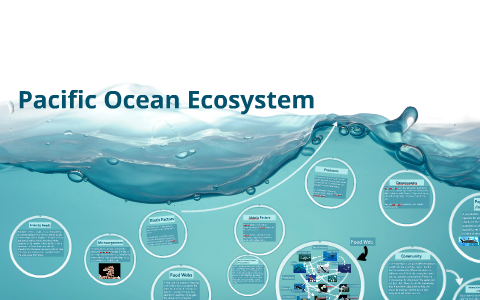
READ MORE:
Climate Change Effects on Oceanic Abiotic Factors
Climate change is significantly impacting oceanic abiotic factors, altering temperature, chemistry, and physical processes of the oceans. These changes pose serious challenges to marine ecosystems and the biodiversity they support.
- Temperature Increase: The warming of ocean surfaces leads to changes in marine biodiversity patterns, coral bleaching, and the migration of species to cooler waters.
- Ocean Acidification: Increased CO2 absorption by the oceans causes acidification, affecting shell-forming species and coral reefs, disrupting marine food webs.
- Sea Level Rise: Melting polar ice caps and glaciers contribute to sea level rise, impacting coastal ecosystems, increasing the salinity of estuaries and freshwater habitats, and leading to habitat loss.
- Changes in Salinity: Altered patterns of evaporation and precipitation affect ocean salinity, impacting marine life through changes in buoyancy, reproduction, and distribution.
- Altered Ocean Currents: Changes in temperature and salinity can disrupt ocean currents, affecting global climate patterns and marine biodiversity by altering the distribution of heat, nutrients, and marine organisms.
- Decreased Oxygen Levels: Warmer waters hold less oxygen, leading to hypoxic zones that can suffocate marine life, disrupting ecosystems and fisheries.
The effects of climate change on oceanic abiotic factors highlight the interconnectedness of global systems and the urgent need for actions to mitigate these impacts and protect marine ecosystems.
Understanding abiotic factors in ocean ecosystems reveals the intricate balance of life beneath the waves, highlighting the need for sustainable actions to protect our planet"s vibrant marine biodiversity for future generations.

